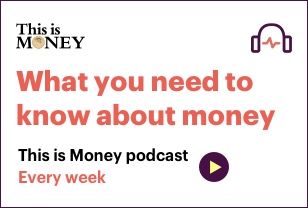Fixed rate savings deals are on average paying the highest returns seen since December 2020, suggesting they are heading in the right direction.
Average fixed rates rose monthly for the first time since October 2020, according to Moneyfacts, while choice grew to the highest number seen this year.
The average fixed-rate one year bond rose from 0.48 per cent in June to 0.52 per cent this month.

There are now 1,500 savings deals on the market – volumes not seen since December 2020, when there were 1,514 deals.
This means the average saver putting away £10,000 in a one-year fixed rate deal will accrue £52.12 in interest over the course of the year.
Although this is more positive news for savers, it is still almost three times lower than the 1.41 per cent average rate seen prior to the pandemic.
A saver stashing away £10,000 in an average one-year fixed rate bond in July 2019 would have accrued £141.91 in interest after a year.
Longer term fixed rate deals also increased over the past month, from 0.72 per cent to 0.77 per cent – once again, still a far cry from the 1.78 per cent average being enjoyed in July 2019.
Rachel Springall, finance expert at Moneyfacts, said: ‘It is clear to see the positive stabilisation to the savings market in the past two months, but we are still some way off from rejuvenation.
‘The average rate rises on fixed bonds will be positive news to savers, particularly to those who may rely on their interest as a form of income.
‘Overall, the choice of deals available to savers has improved this month, and while these levels are far from the volumes seen before the pandemic, it is still a refreshing change to the record lows during 2021.’
Where should savers move their money?
Savers looking to eke out some extra interest above what they are currently earning will need to be prepared to leave some of the more established names paying next to nothing in interest.
As of 13 July, of the 97 fixed rate savings accounts with terms of up to one-year, 93 paid less than 1.01 per cent interest, according to Investec.
Andrew Hagger, personal finance expert at MoneyComms said: ‘There’s been a real upturn in fixed savings rates over the last few months – enough to make it worthwhile to shop around again.
‘1.01 per cent is a very competitive one year rate and is six to ten times as much as being offered by some of the biggest high street banks.
‘The range between best and worst rates is widening which means it’s time for savers to sit up and take note, to ensure their cash nest egg is delivering a best buy return.’
There are three new best buys for savers to choose from – the most eye-catching being the market leading two-year fixed rate deal with QIB (UK) deal offering a return of 1.25 per cent.
The bank is the UK arm of the Qatar Islamic Bank, and has been operating in Britain since 1982.
Savers who opt to open their account with QIB (UK) via the savings platform Raisin can also benefit from a welcome bonus on top of the interest they earn.
The bonus is scalable depending on how much customers deposit into the opening account.
The welcome bonus amount is dependent on the amount you deposit – if you deposit between £5,000 and £39,999 you can claim a welcome bonus of £10, for between £40,000 and £74,999 you will receive £50.
For those able to deposit £75,000 or above they will receive a welcome bonus of £100. All of these bonuses help nudge the rate higher.
For those who are not comfortable with a two year timeframe, the current leading one-year best buy is with Gatehouse Bank, offering 1.1 per cent interest.
Both the QIB (UK) and Gatehouse Bank accounts can be opened with £1,000 and have Financial Services Compensation Scheme protection up to £85,000.
But savers wishing to take advantage of the top savings rates are being encouraged to act fast or risk missing out.
‘Savers have had a terrible time with rates falling to record lows this year and as things improve, they would be wise to keep a close eye on the top rate tables and act quickly to take advantage,’ said Springall.
‘The shelf life on a fixed rate bond fell to 53 days, showing signs that a good deal may not last too long as brands continue to react to market movements.’
Savings calculator
Work out how a lump sum or regular monthly savings would grow



